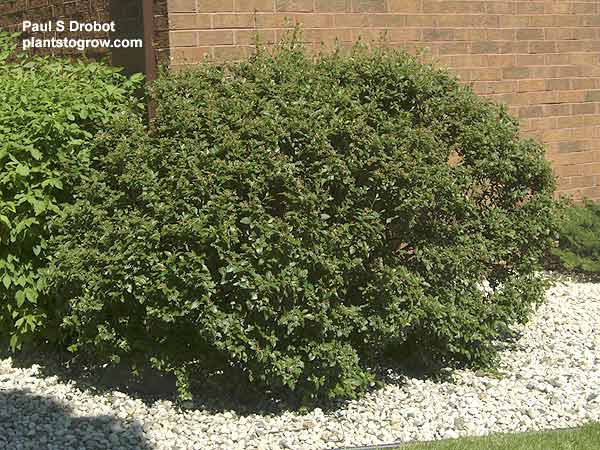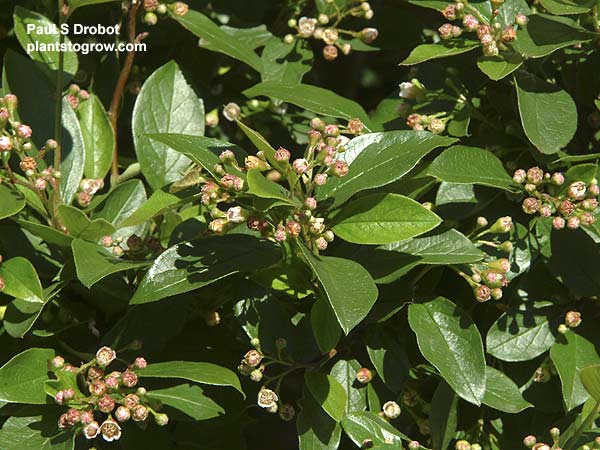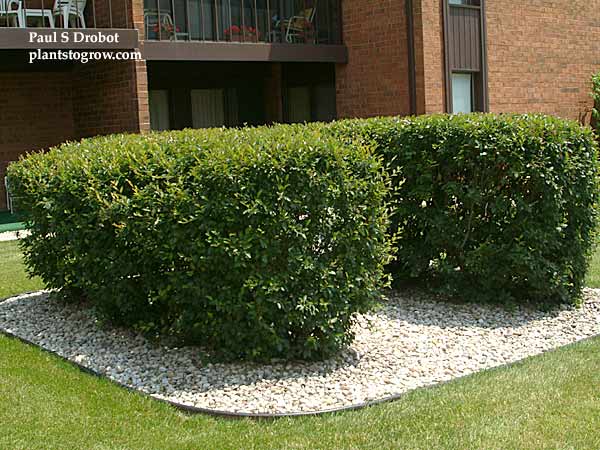| Description | A tough parking lot plant. |
|---|---|
| Pronunciation | (ko-tone-EE-aster) |
| Plant Type | All Plants, Shrubs Deciduous |
| Hardiness Zone | 4-9 |
| Sunlight | full sun but will tolerate shade |
| Moisture | average, very adaptable |
| Soil & Site | average, very adaptable |
| Flowers | small pinkish white |
| Fruit | pome, almost black |
| Leaves | alternate, simple, dark green, fall colors are oranges reds and yellows |
| Dimensions | Reaches 6-8 plus feet high with an equal spread. More commonly pruned to size as opposed to growing as a large shrub. Has an oval erect shape. |
| Maintenance | pruning, tends to get leaf spot diseases in the fall |
| Native Site | Siberia |
| Cultivar Origin | cultivates since 1840 |
| Misc Facts | The name for the genus is derived from the Latin words 'cotone', an old name for the quince plant, and the suffix 'aster' means "resembling" (#156). |
| Author's Notes | This is an extremely tough Cotoneaster. Have used for hedges and tough growing sites. |
| Notes & Reference | #01-Manual of Woody Landscape Plants (Michael Dirr), #156-San Marcos Growers web site (www.smgrowers.com), , 173-Cotoneaster (Jeanette Fryer, Bertil Hylmo) |

Cart






